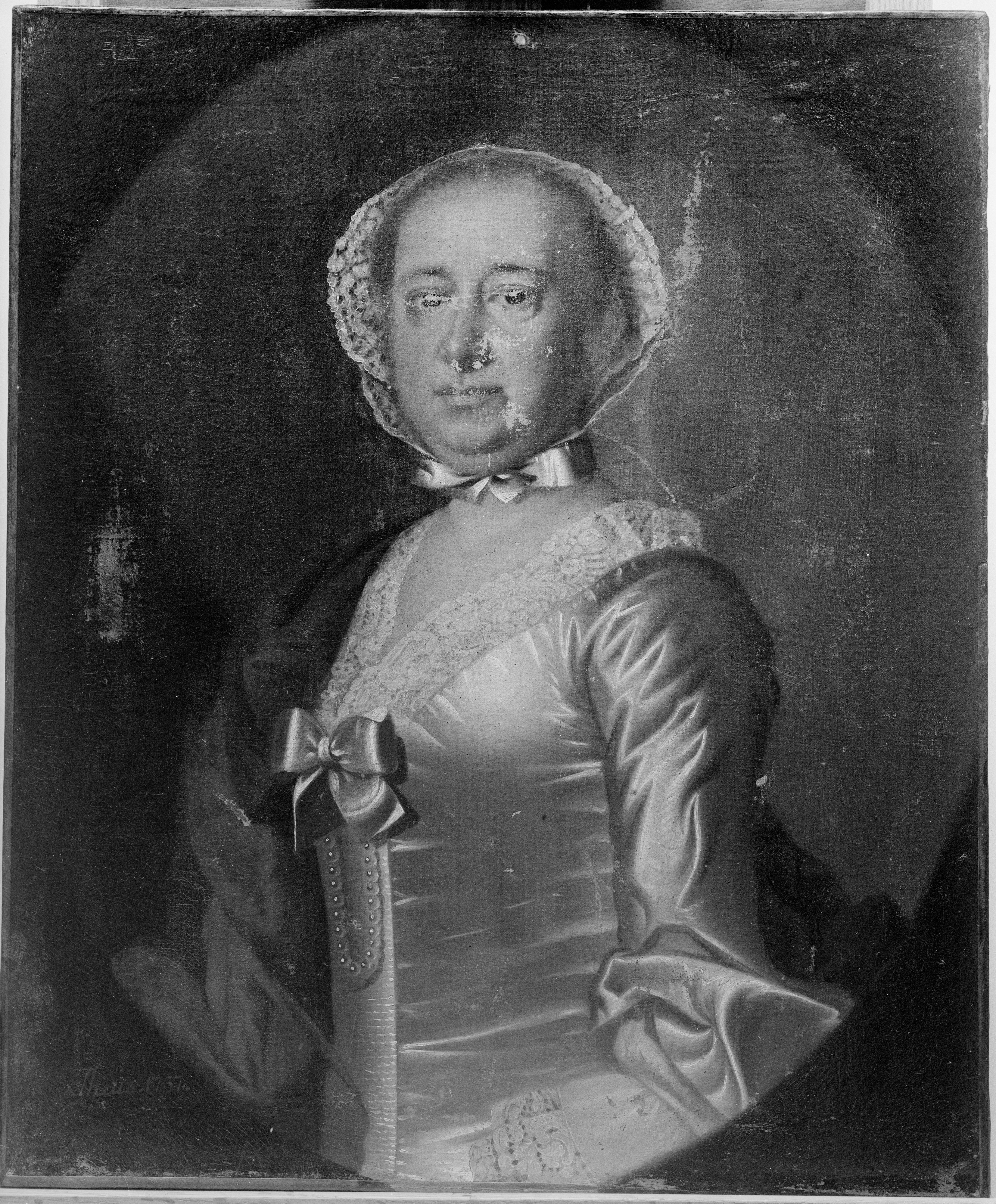Mrs. Gabriel Manigault
Jeremiah Theus American
Portraits of the South Carolina Manigault family patriarch (28.126.1) and matriarch by Charleston’s leading 18th-century painter, the Swiss-born Jeremiah Theus, document two centuries of aristocratic privilege as well as the material afterlives of what made it possible. Son of a French Huguenot merchant, Manigault was considered the wealthiest man in colonial South Carolina, who supported the revolutionary cause with his private fortune derived from rice plantations run by slave-labor. He reportedly counted nearly 300 enslaved individuals as his property at one time. Ann Ashby Manigault, from another wealthy South Carolina planter family, is remembered for her journal documenting patrician life in 18th-century Charleston, including the sittings for the Theus portraits.
These works also hold a history of the family’s declining fortunes post-emancipation. In 1867, a descendant, Charles Izard Manigault, recorded how the paintings were defaced (see black-and-white images), likely after their removal to the family’s Silk Hope plantation for safe-keeping during the Civil War. Recent scholarship has proposed this deliberate disfigurement of the canvases as acts of iconoclasm and rebellion by formerly enslaved residents of Silk Hope.
Due to rights restrictions, this image cannot be enlarged, viewed at full screen, or downloaded.
This artwork is meant to be viewed from right to left. Scroll left to view more.



